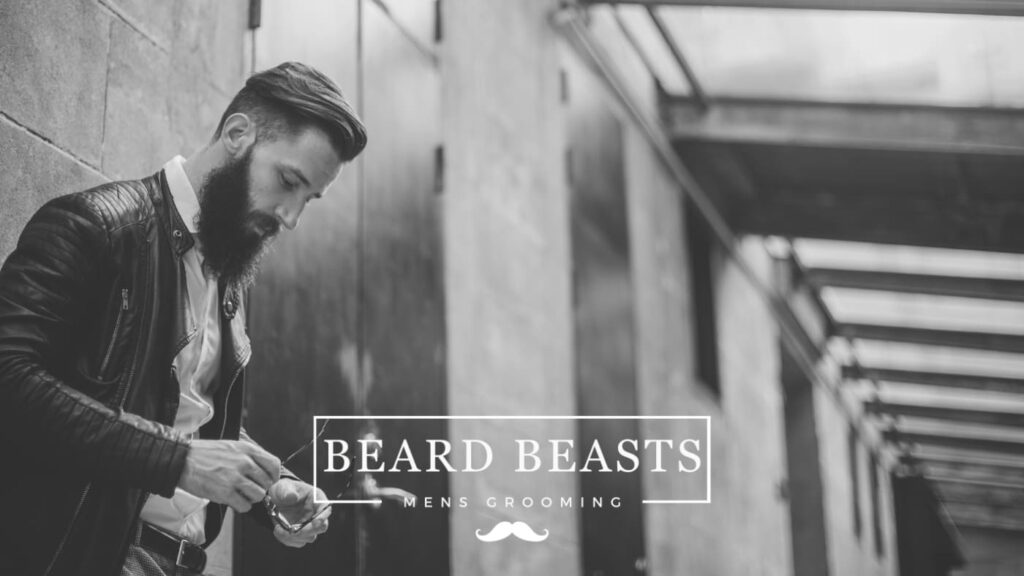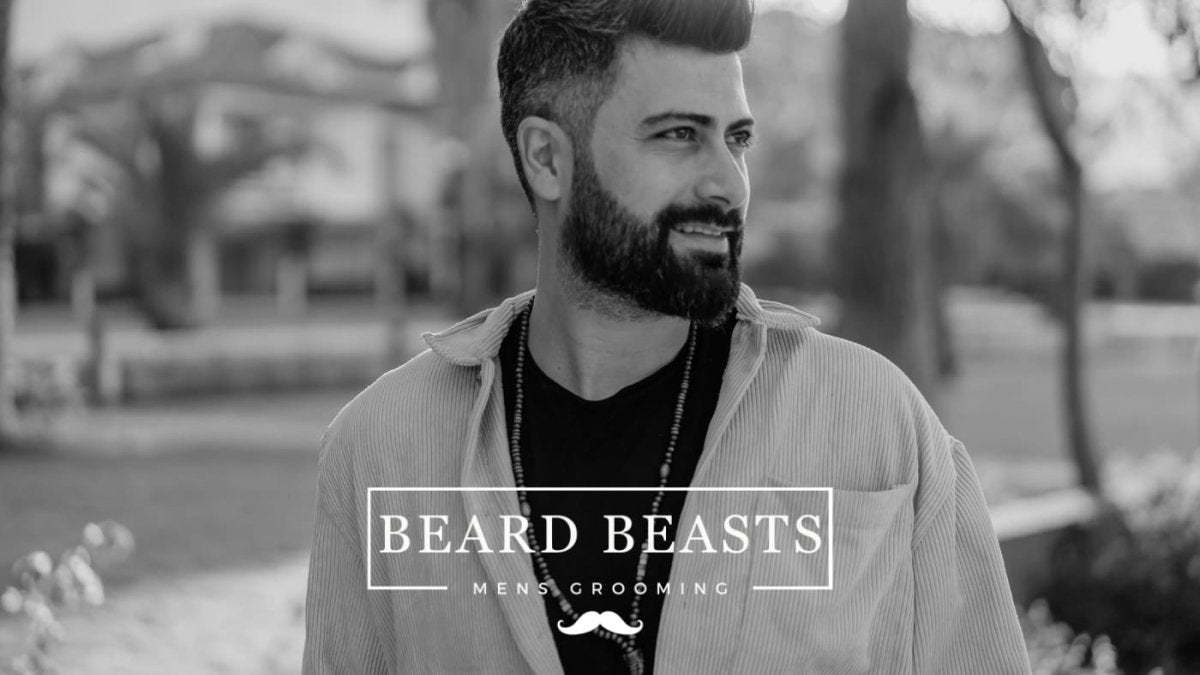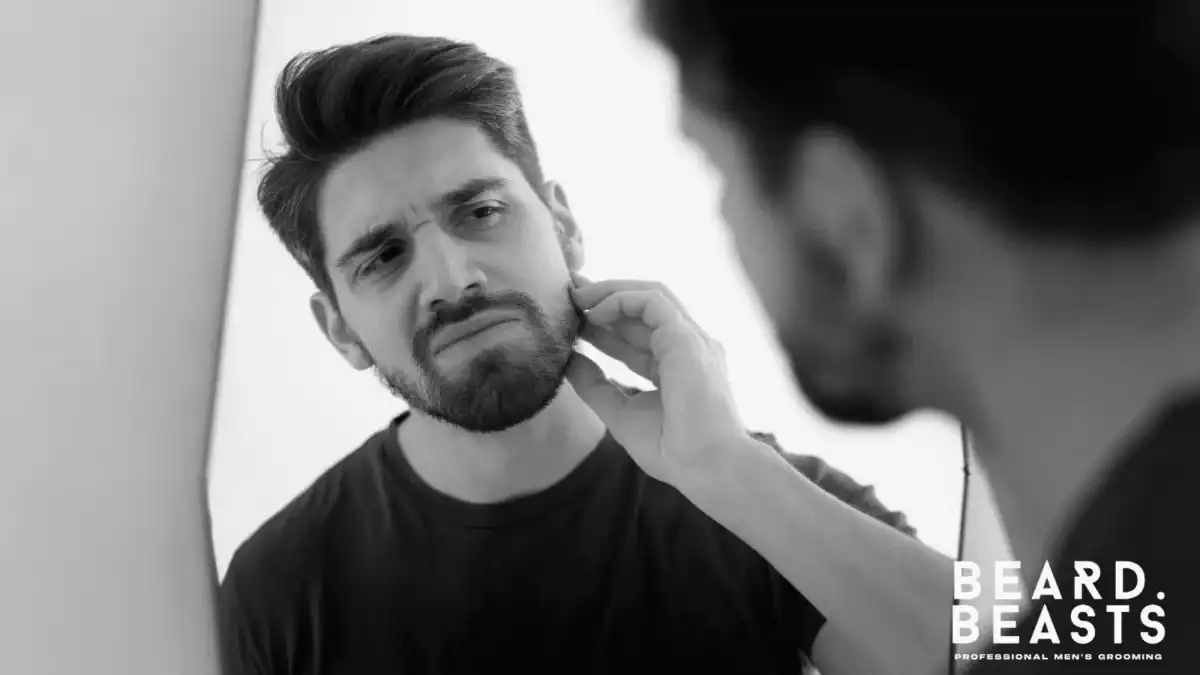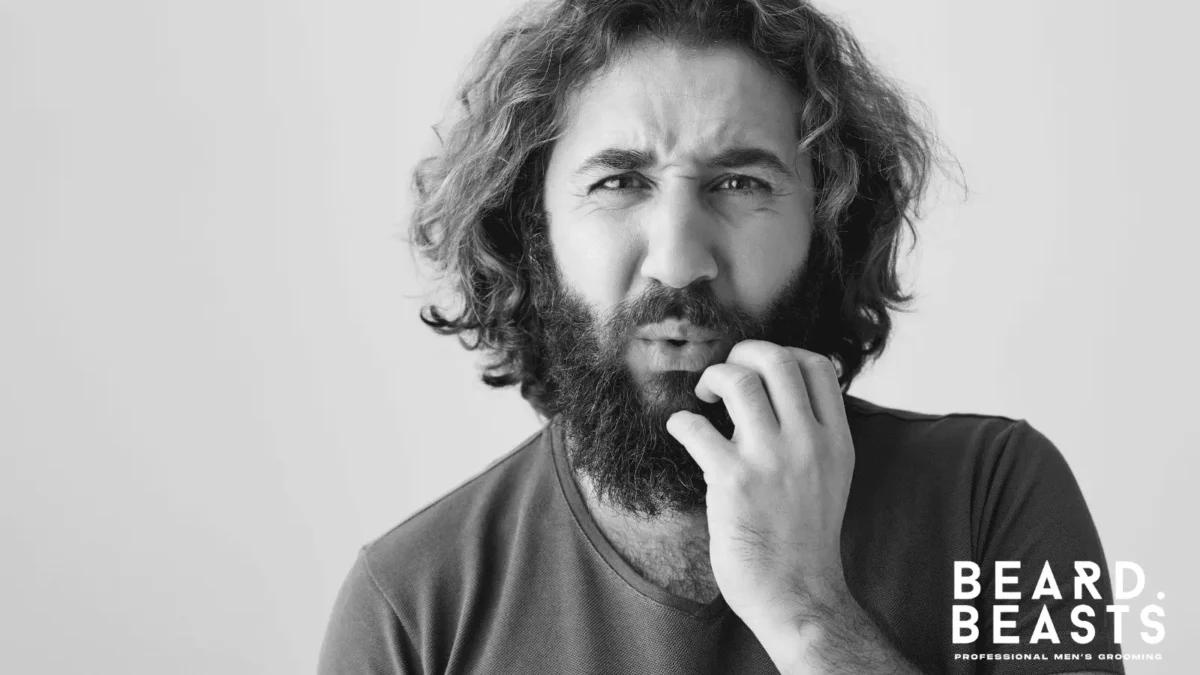Embarking on the journey of growing a beard brings with it a wave of questions, with how fast does facial hair grow? leading the pack. This curiosity is more than just about achieving a certain look; it’s about understanding what to expect and how to best nurture your growing beard. Facial hair growth is a process influenced by a unique combination of genetics, age, health, and lifestyle choices, making each beard growth journey distinct.
This article dives into the intricacies of facial hair growth, offering insights into the average growth rate, the factors that influence it, and tips on how to support and enhance your beard’s growth. Whether you’re a seasoned beard grower or just starting out, understanding these aspects can help you set realistic expectations and develop a grooming routine tailored to your beard’s needs. Let’s explore the dynamics of how fast facial hair grows, unlocking the secrets to nurturing a healthy, well-maintained beard.
How Fast Does Facial Hair Grow?
Growing a beard is a journey unique to each individual, marked by anticipation and often a flurry of questions, with how fast does facial hair grow? at the forefront. This curiosity isn’t just about vanity; it’s about setting realistic expectations and crafting a beard grooming routine that aligns with your beard’s natural growth cycle.

Facial hair typically grows at an average rate of about 0.5 inches (approximately 1.25 cm) per month, translating to roughly 0.015 inches (or about 0.38 mm) per day. Yet, this is a broad average, and the actual speed of beard growth can diverge significantly among different individuals.
The variation is influenced by a mix of genetics, age, health, and lifestyle choices, each factor contributing its own unique impact on both the pace and the fullness of facial hair growth.
Deep Dive into Influencing Factors:
Genetics: The primary architect behind the scenes, genetics, not only dictates the potential length and density of your beard but also its growth rate. Observing the beard patterns in your family can offer clues about what to expect for yourself.
Age: The journey of beard growth tends to hit its stride from the late teens through to the early 30s. During these years, many men notice a significant uptick in both the speed of growth and the thickness of their facial hair. However, this doesn’t mean beard growth stops after a certain age; it merely changes pace.
Health and Nutrition: The saying “you are what you eat” holds true for beard growth as well. A diet lacking in essential nutrients can hamper your beard’s growth rate. Conversely, a balanced diet, rich in vitamins and minerals such as biotin, vitamin E, and zinc, supports and possibly enhances hair growth.
Lifestyle Choices: External factors like stress management and sleep quality can affect your beard. High stress levels may slow beard growth or cause more of it to enter the resting phase, leading to potential beard hair loss. Adequate sleep and regular exercise, on the other hand, not only improve your overall health but can boost beard growth by enhancing circulation and increasing testosterone levels.
Understanding the dynamics of facial hair growth and recognizing the broad spectrum of growth rates can help you embrace your beard’s unique journey. Whether your beard grows faster or slower than the average, it’s a personal trait to be celebrated. Patience, coupled with a dedicated grooming routine that includes regular washing, conditioning, and proper nutrition, can help you nurture a healthy, well-maintained beard that reflects your individuality and style.
Remember, growing a beard is a personal and variable experience. While the question how fast does facial hair grow? offers a general framework, the journey is highly individualized.
By acknowledging and respecting your beard’s natural pace and characteristics, you can enjoy the process of growing and grooming your beard, achieving the best possible results unique to you.
How Long Does a Beard Grow in a Week?
Curious about the progress you can expect from your beard in a week? Understanding the weekly growth rate of facial hair can help set realistic expectations for your beard journey.
On average, facial hair grows about 0.5 inches (1.25 cm) per month. This means that in a week, you can expect your beard to grow approximately 0.125 inches or about 3 millimeters. However, it’s crucial to remember that this is an average estimate. The actual growth rate can vary widely among individuals due to factors like genetics, age, health, and nutrition.
While a growth of 3 millimeters in a week might not seem like much, it’s a sign that your beard is on its way to becoming fuller. Each hair follicle on your face is at its own stage of the growth cycle, meaning your beard will grow in thickness and length at different rates.
Tips for Monitoring Weekly Growth:
- Take weekly photos: This can help you visually track the progress of your beard growth over time.
- Keep a growth journal: Note any changes in length or thickness, as well as any new grooming routines or products you try.
Remember, growing a beard is a journey that requires patience and care. While how long does a beard grow in a week? provides a general guideline, the key to a great beard is not just its length but its health and how well it suits your style. Keep nurturing your beard, and you’ll see the rewards of your efforts over time.
Factors Influencing Facial Hair Growth
While genetics set the stage for your facial hair’s potential, several other factors can influence how fast and thick it grows. Understanding these can help you optimize your beard growth and health.
Genetic Factors
How Genetics Play a Role: Your DNA is the blueprint of your beard. It determines not just the color and texture but also influences how fast your facial hair grows. If your family members can grow dense beards quickly, you’re likely to experience the same. This genetic lottery affects everything from the age at which you start growing facial hair to its fullness and coverage.
Variations Across Different Ethnic Groups: Ethnic background significantly influences beard growth patterns. For instance, men of Mediterranean descent often have thicker and faster-growing facial hair compared to men from East Asian backgrounds. These differences are a testament to the diverse tapestry of genetics influencing beard growth across populations.
Health and Nutrition
Diet’s Impact on Hair Growth: Just like the rest of your body, your facial hair needs a balanced diet rich in vitamins and minerals to grow healthy and strong. Poor nutrition can slow down hair growth and affect its quality.
Vitamins and Minerals Essential for Hair Health: To support healthy facial hair growth, focus on consuming vitamins that help beard growth, such as A, B, C, D, E, and minerals like zinc and iron. These nutrients support the hair growth cycle, strengthen hair follicles, and can improve the density and speed at which your beard grows.
Lifestyle Factors
The Effects of Stress and Sleep on Hair Growth: High stress and poor sleep can both negatively impact your beard’s growth rate and health. Stress can push hair follicles into a resting phase, slowing growth, while adequate sleep is crucial for the regeneration and growth of hair cells.
Exercise and Its Relation to Facial Hair: Regular exercise not only boosts your overall health but can also have a positive effect on your beard. Exercise improves blood circulation, which helps to deliver those essential nutrients to your hair follicles more efficiently. Additionally, exercising increases testosterone levels, potentially enhancing the growth rate and thickness of your facial hair.
In summary, factors such as genetics, diet, and lifestyle choices all play significant roles in determining how fast does facial hair grow? By paying attention to these aspects, you can better understand your beard’s growth patterns and take steps to promote a healthier, fuller beard.
Stages of Facial Hair Growth
To fully grasp how fast facial hair grows and how to care for it effectively, it’s crucial to understand the hair growth cycle. This cycle is divided into three main stages: Anagen, Catagen, and Telogen. Each stage has its characteristics and impact on your beard’s appearance and growth.
Understanding the Growth Cycle
Anagen (Growth Phase): The Anagen phase is the period of active growth. During this stage, your facial hair is constantly growing. This phase can last from a few months to several years, depending on your genetics and health. The longer the hair remains in this phase, the longer it can grow.
Catagen (Transition Phase): Following the Anagen phase, your facial hair enters the Catagen phase. This is a short transition period that lasts about two to three weeks. During this time, hair growth slows down, and the hair follicle shrinks. This phase prepares the hair to enter the resting phase.
Telogen (Resting Phase): The final stage is the Telogen phase, where the hair stops growing and rests for about three to four months. At the end of this phase, the hair falls out, and new hair begins to grow in its place, starting the cycle anew.
What This Means for Your Beard
How Each Stage Affects Appearance: During the Anagen phase, you’ll notice your beard growing thicker and longer. The Catagen phase won’t bring noticeable changes but marks the preparation for the resting phase. In the Telogen phase, you might see some hair shedding, but this is a natural part of the growth cycle, making way for new growth.
Duration of Each Growth Stage: The duration of each stage can vary widely among individuals. Most facial hair spends a significant amount of time in the Anagen phase, which is good news for beard growth. However, genetics, health, and nutrition can affect how long your facial hair remains in each phase, impacting how fast and thick your beard grows.
Understanding the stages of facial hair growth and their implications can significantly enhance your grooming routine and help you answer the question, how fast does facial hair grow?
Recognizing that shedding during the Telogen phase is a normal part of the cycle reassures you that it’s a sign of renewal, not a cause for concern. Moreover, by focusing on optimal health and nutrition, you can potentially extend the Anagen phase of growth. This not only promotes a fuller beard but may also contribute to a faster facial hair growth rate, allowing you to enjoy a more robust beard over time.
Enhancing Facial Hair Growth
For many, the quest for a fuller, thicker beard leads to the exploration of various methods to stimulate facial hair growth. While genetics play a pivotal role, there are proven ways to support and potentially enhance your beard’s growth.
Proven Tips for Stimulating Growth
Proper Skincare and Hygiene: Healthy skin is the foundation of a healthy beard. Keeping your face clean and well-hydrated encourages hair follicles to grow unimpeded. Use a gentle beard wash to remove dirt and oil, and consider applying a beard oil to keep the skin underneath your beard hydrated.
Recommended Grooming Practices: Regular grooming can not only make your beard look great but also promote healthier growth. Brushing your beard daily with a beard boar bristle brush can stimulate blood circulation to the follicles, encouraging growth. Trimming beard split ends and shaping your beard as it grows can also prevent breakage and maintain the health of your facial hair.
Debunking Myths About Facial Hair Growth
Shaving and Hair Growth Myths: A common myth is that shaving your beard will make it grow back thicker and faster. However, shaving cuts the hair at the surface, not affecting the growth rate or thickness at the follicle level. Your hair may feel coarser as it grows back because of the blunt tips created by shaving, but the growth rate remains unchanged.
Common Misconceptions About Beard Products: While many beard products claim to boost growth, it’s important to approach these claims with skepticism. Products like oils and balms can help moisturize and condition your beard, making it appear fuller and more manageable, but they do not significantly alter the growth rate. Look for products with natural ingredients that nourish the skin and hair for the best results.
Enhancing facial hair growth involves a combination of good skincare, proper grooming, and debunking common myths. While how fast does facial hair grow? can vary widely from person to person, implementing these tips can help you achieve a healthier, more attractive beard. Remember, patience and consistency are key to seeing the best results in your beard growth journey.
Conclusion
In conclusion, the question how fast does facial hair grow? unveils a fascinating journey unique to every individual, influenced by a blend of genetics, age, health, and lifestyle choices. While facial hair typically grows at an average rate of about 0.5 inches per month, this rate can vary greatly from person to person.
Key Takeaways:
- Genetic Blueprint: Your genetics play a crucial role in determining the growth rate, density, and characteristics of your beard. Looking at your family tree can give you a hint of what to expect.
- Optimal Growth Age: The prime time for beard growth spans from the late teens to the early 30s, but beard development doesn’t just stop there; it evolves over time.
- Nutrition Matters: A healthy diet rich in essential vitamins and minerals supports robust facial hair growth. Incorporating foods high in biotin, vitamins A, C, D, E, and minerals like zinc and iron can nourish your beard from the inside out.
- Lifestyle Impact: Stress management, quality sleep, and regular exercise not only benefit your overall health but can also positively influence your beard’s growth rate and health.
Growing a beard is a personal adventure, marked by patience and care. Understanding how fast facial hair grows helps set realistic expectations and guides you in crafting a grooming routine that suits your beard’s needs. Embrace your beard’s unique pace and characteristics, and remember, a healthy, well-groomed beard is a reflection of your overall well-being and dedication to grooming. Keep nurturing your beard with patience and proper care, and enjoy the journey of discovering your beard’s full potential.





